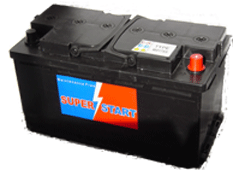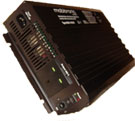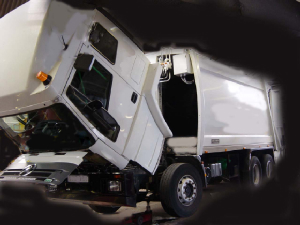Auto Electrical Vehicle Diagnostic Service in Shropshire UK
Vehicle Body Control Modules
Most modern vehicles utilise a network of computerised control modules for activation and deactivation of autoelectrical systems.
The vehicle body control module (bcm) forms a central point for vehicle body and chassis wiring systems. There may be more than one control module
controlling vehicle body functions.
The BCM may be integrated with a central junction box (CJB) containing fuses, circuit breakers and relays to provide switching and circuit protection.
The BCM is often linked to other control units as part of a vehicle network.
Vehicle manufacturer terminology
Confusingly, different vehicle manufacturers often identify body control modules under their own generic terminology:
Ford : Generic Electronic Module (GEM)
Audi VW Seat Skoda : Convenience control module, Central electronic unit
Mercedes : Signal Acquisition Module (SAM), Front SAM, Rear Sam.
Peugeot Citroen : BSI module
Renault : UCH module
Vauxhall : Underhood Electrical Centre (UEC), Rear Electrical Centre (REC)
Others: Body control module BCM
Typical Body Control Module (BCM) Functions
The body control module uses driver inputs from switches and modules (including CIM) via the vehicle controller area network CAN (CANbus) or Local interconnect Network LIN (LINbus).
Serial data is sent on the bus (CANbus or LINbus) as bits and bytes (Hexadecimal code).
Controller modules process information,
and provide electrical outputs to control vehicle body autoelectrical systems.
Typical body control module functions and fault codes may include:
Vehicle Alarm system activation of flashing lights and siren. Fault code 01134 Alarm Horn no signal
Central Door Locking (CDL) system to lock and unlock vehicle doors. Fault code 01331 ECU driver door J386 No signal,
Electric door module passenger 01553 Motor for central door lock passenger, electrical problem in circuit, 00097 Front passenger central locking motor v162 electrical problem in circuit.
Key programming to allow recognition of the correct drivers key and allow / prevent vehicle engine starting.
Sidelights and Number Plate Lights , 00984 Lefttail light, 00985 Right tail light
Headlights
Front and Rear Fog lamps
Direction Indicators : 03098 Left rear turn signal, 03099 Right rear turn signal
Hazard Warning Lights
Brake lights
Reversing Lights
Windscreen Wipers and Washers
Horn
Interior courtesy lighting including timed delay
Heating and Air conditioning
Battery monitoring and charge control
Speed monitoring and cruise control
Air suspension (if fitted)
Audio systems
The BCM may be integrate both fuses and relays to provide electrical switching and circuit protection.
Column Interface Module (CIM)
There are various names given to the control module providing switchgear and control stalks for headlights, indicator stalk, and wiper switch stalk
including Column integrated module, CIM, Column interface module, etc.
The main function of the CIM is to provide a driver input control which is communicated to the body control module over the vehicle network,
many other functions may be incorporated in this programmed module.
Obsolescence becomes a problem as vehicles age and switchgear becomes worn, particularly at high mileage.
Problems we have encountered with CIM equipped vehicles have included headlights stuck on or coming on intermittently causing the battery to drain and consequent
failure of the vehicle to start.
Other problems have included CIM losing communication with other modules and preventing the vehicle starting resulting in immobilisation.

BCM Diagnostics, Coding and Programming
BCM Fault Codes
The BCM may log fault codes also known as diagnostic trouble codes (dtc) if a circuit error is detected.
Diagnostic equipment may be required to clear fault codes from the bcm before functions are restored.
Diagnostic equipment may be required to relearn settings in the bcm when a component is replaced.
BCM Configuration Coding
The vehicle body control module is often 'coded'.
Coding allows the vehicle manufacturer to configure control modules to specific vehicle specification and restrict access.
Vehicle diagnostic equipment capable of setting up (configuring) a bcm to the vehicle may require pin code
access before vehicle identification coding such as Vehicle Identification Number and parameter configuration can be set up.
The new bcm may be supplied as a blank module from the vehicle manufacturer.
Data from the old bcm may need to be downloaded via the diagnostic tool then uploaded to the new bcm.
Replacement of the bcm on newer vehicles may require the vehicle be connected to the vehicle manufacturers
service portal via diagnostic equipment to allow 'pass thru' programming.
Replacement of the vehicle body control module may require specific manufacturers authorisation information particularly where security access is required. This may mean a SAE J2534 pass thru device linked to a manufacturers service portal is required.
Checking BCM Inputs
Power and Ground
Correct power supply is essential for computer modules to operate correctly. Power supply provides reference voltage. If vehicle battery voltage is out of range this can cause erratic behaviour of computer controller modules.
Component Wiring
BCM inputs from switches may be checked by using vehicle diagnostic equipment.
Serial data mode can be used to check voltages. Switch logic can be monitored.
Where serial data does not show operation of a switch or signal, then wiring between the bcm and component may need to be checked.
A broken wire between switch and component may result in a function not operating.
Detailed and accurate wiring information is almost always required to check wiring between component and bcm, which may require access to manufacturers service portal.
Vehicle manufacturers generally make charges for access to service portal information based on time period.
Checking BCM Outputs using diagnostic tester
BCM output functions may be checked with specialised vehicle diagnostic test equipment using an actuator test function which will send commands to the vehicle computer telling it to switch on lights etc.
Networking
The BCM is likely to be part of a network of vehicle computer modules which communicate serial data via the controller area network bus (CANbus) system.
Diagnostic serial data may raise fault codes in other modules when communication faults with bcm exist.
Manufacturers may limit programming access to modules by use of digital locking requiring a security access code before certain levels of diagnostics and reprogramming are available.
Replacement of a BCM may require software is loaded on to the module to configure and gain functionality which can present problems for aftermarket repairers
BCM Faults
BCM faults may prevent the vehicle from starting, allow to start and run for a few seconds,
or provide strange effects with functions such as lighting, wipers, door locks, etc.
Many BCM faults are a result of water ingress causing corrosion and deterioration of circuit board electronics.
BCM faults may result in parasitic current draw which can result in slow discharge of the vehicle battery subsequently preventing vehicle starting.
Replacement of BCM may require dealer level programming.
Trailer Socket Wiring
Vehicles using a BCM to control lighting functions may require that a logic relay eg 7 way bypass relay is fitted if wiring additional trailer electrics.
Vehicle specific trailer modules may be required by certain manufacturers.
The BCM may detect circuit loading.
If additional lights are fitted to the vehicle lighting circuit the module detects extra load and sees this as a fault
subsequently logging error codes and denying power to the affected circuit stopping particular lighting functions.

 Air Conditioning Climate Control
Air Conditioning Climate Control Autoelectrical Installation
Autoelectrical Installation Alternators
Alternators Starter Motors
Starter Motors Batteries
Batteries Onboard Power
Onboard Power Fleet Inspection on site
Fleet Inspection on site Email Enquiry
Email Enquiry